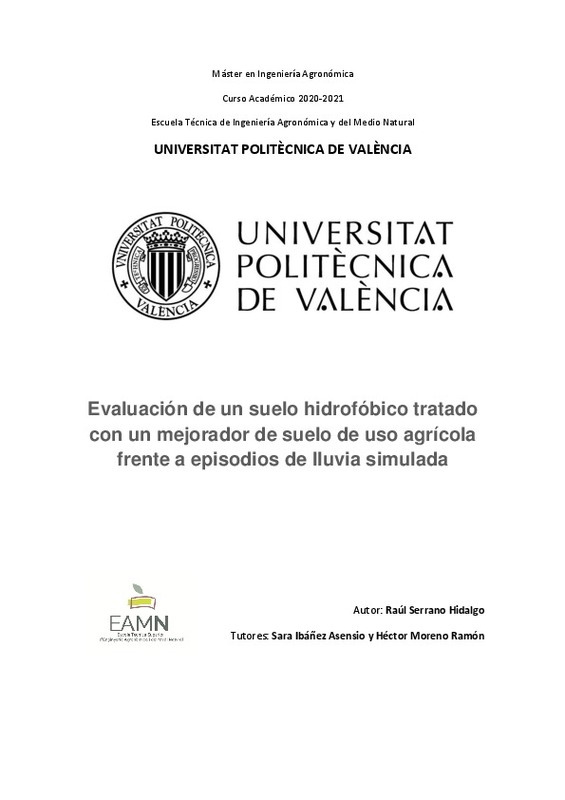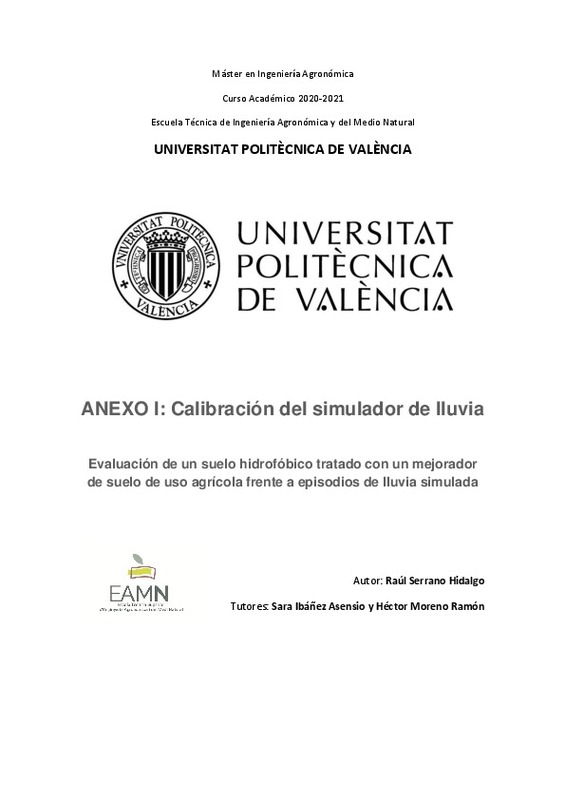|
Resumen:
|
[ES] Los incendios forestales son causantes de transformaciones súbitas en el ecosistema en el que ocurren, provocando cambios bruscos tanto en la vegetación como en el suelo. En algunos casos estos cambios son positivos, ...[+]
[ES] Los incendios forestales son causantes de transformaciones súbitas en el ecosistema en el que ocurren, provocando cambios bruscos tanto en la vegetación como en el suelo. En algunos casos estos cambios son positivos, como, por ejemplo, el mantenimiento del ecosistema permitiendo la germinación de semillas que están en letargo en el suelo y que sólo eclosionan cuando hay un incendio, o aumentando la biodiversidad en ecosistemas longevos. Pero también ocasionan efectos negativos como el aumento de la erosión, sobre todo hídrica, al perderse la cobertura vegetal y provocarse una mayor escorrentía. Esta problemática se ve agravada con otro efecto generado en algunos incendios, como la hidrofobicidad derivada de la transformación de algunas moléculas orgánicas del suelo o de los propios restos vegetales en partículas con repelencia al agua, provocando que la tasa de escorrentía sea aún mayor y con ella la erosión.
En el presente trabajo se va a evaluar la eficacia de un producto mejorador del suelo de uso agrícola, el Zytonic, en la reducción o eliminación de la hidrofobicidad mediante ensayos de laboratorio utilizando un simulador de lluvias y bandejas de erosión. Los ensayos se realizarán sobre tierra vegetal sometida a diversos tratamientos con el fin de reproducir las condiciones del suelo tras un incendio forestal, registrándose la tasa erosión y la tasa de escorrentía en los suelos con y sin producto sometidos a dos episodios de lluvia de características similares (en intensidad y energía cinética) a la precipitación natural del clima mediterráneo
Como variables complementarias se testarán el comportamiento hidrológico del suelo (retardo en el inicio de la escorrentía) y parámetros edáficos determinantes del mismo (contenido en materia orgánica, estructura, estabilidad de agregados, porosidad y permeabilidad).
[-]
[EN] Forest fires are the cause of sudden transformations in ecosystems in which they occur, causing abrupt changes in vegetation and soil. In some cases, the changes are positives, such as, for example, the maintenance ...[+]
[EN] Forest fires are the cause of sudden transformations in ecosystems in which they occur, causing abrupt changes in vegetation and soil. In some cases, the changes are positives, such as, for example, the maintenance of the ecosystem allowing the germination of seeds that are dormant in the soil and only hatch when there is a fire or increasing biodiversity in long-lived ecosystems. But they also cause negative effects such as increased erosion, especially water erosion, because the lost of the of vegetation cover encourage a greater runoff. This problem is aggravated by another effect generated in some fires, the hydrophobicity derived from the transformation of some organic molecules in the soil or the plant remains themselves into particles with water repellency, causing the runoff rate and erosion even higher.
The object of this thesis is evaluate the efficacy of a soil improver for agricultural use (Zytonic) in reducing or eliminating the hydrophobicity and for this purpose, a rain simulator and erosion trays will be used. The tests will be carried out on loam soil subjected to various treatments in order to reproduce the soil conditions after a forest fire, recording the erosion rate and the runoff rate in the soils with and without product subjected to two rain episodes of similar characteristics (in intensity and kinetic energy) to the natural precipitation in the Mediterranean climate.
As complementary variables, the hydrological behavior of the soil (delay in the start of runoff) and soil parameters (organic matter content, structure, aggregate stability, porosity, and permeability) will be tested.
[-]
|








